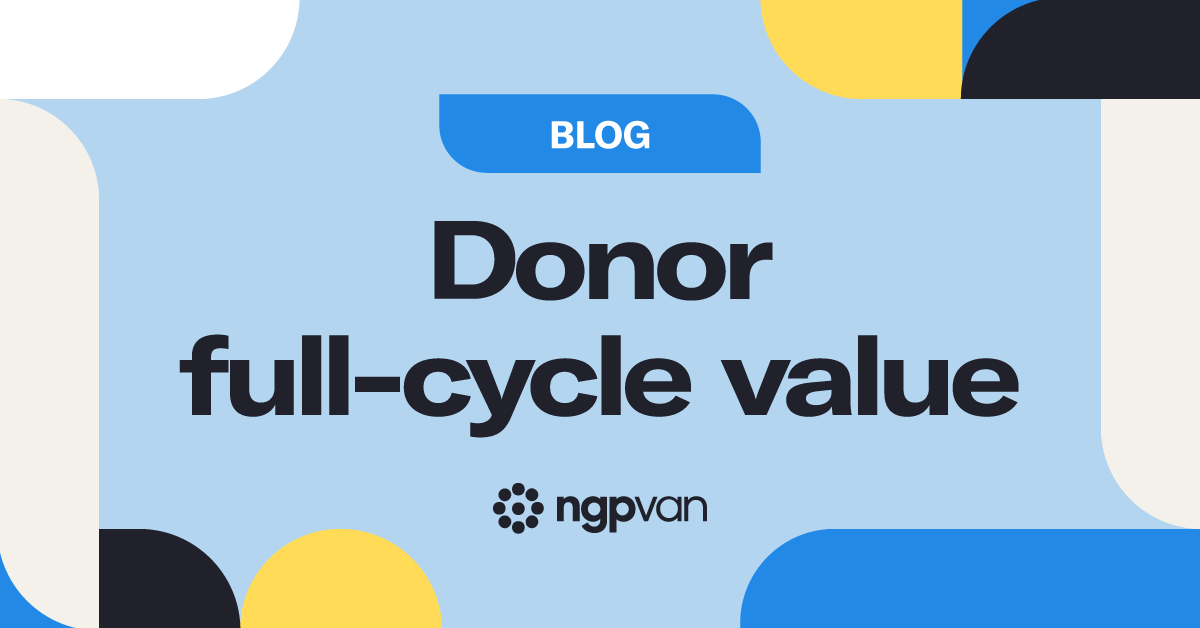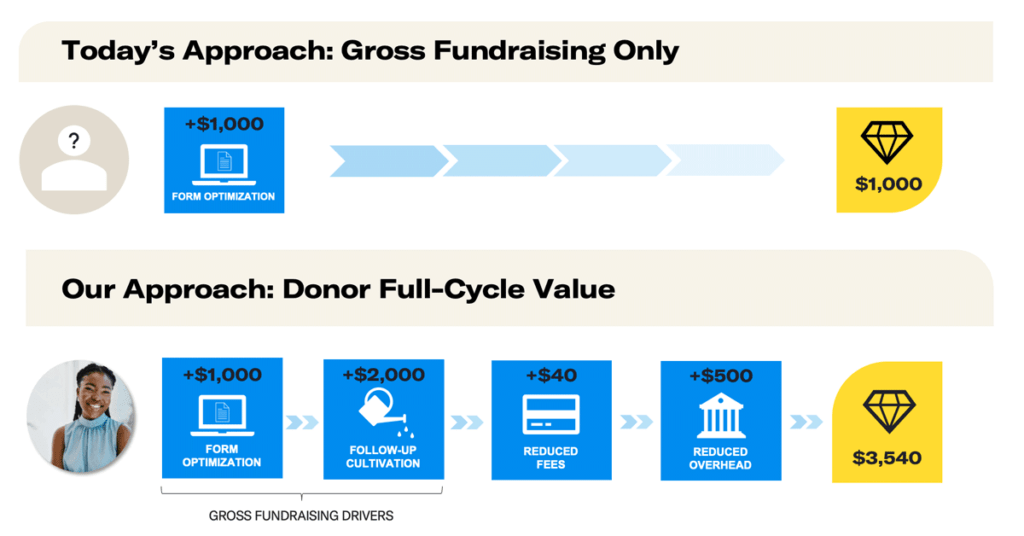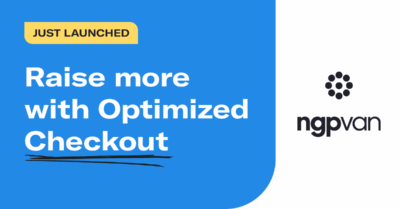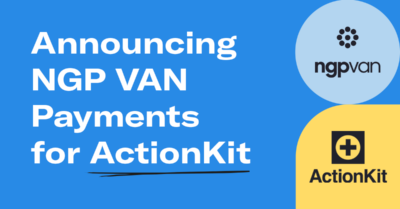Donor full-cycle value: reframing political fundraising success in 2024 and beyond

As the leading fundraising and compliance software provider to Democratic and progressive campaigns and organizations, we deeply understand the importance of closely planning for and tracking fundraising yield. This need has driven our development and our partnerships with the biggest campaigns and organizations in politics.
Historically, the metrics our industry collectively uses to monitor fundraising success (like form conversion rates and or total dollars raised) offer a limited perspective on the overall fundraising success of a political campaign or organization. While we should always work to improve those top-line metrics, we should also look to gain a more holistic view of a donor’s relationship with our candidate, campaign, or cause.
Enter the concept of “donor full-cycle value.” This new concept takes the metrics we use to evaluate political fundraising to the next level by analyzing the full scope of fundraising operations — from optimization opportunities to follow-up cultivation to processing fees and overhead costs. This framing allows you to evaluate your donor full-cycle value and find ways to improve it. But why should we evaluate fundraising through this concept now?
While political fundraising has evolved, most of the success metrics we use have not.
Many of the metrics and fundraising strategies that we use today are the same ones we used 20 years ago when Howard Dean’s presidential campaign scaled digital fundraising for the first time for a political campaign. Since then, fundraising has evolved — new laws, limits, and entities have come about, advertising methods changed, and total fundraising has skyrocketed. But many of the metrics we use to measure success have not evolved alongside those developments.
In the past, campaigns and causes have sought to focus on improving conversion rates by optimizing contribution forms and increasing average contribution amounts. While those are both important parts of the formula to help improve gross fundraising, there’s more that could — and should — be done to help campaigns and causes raise and save more money and realize the full value of a donor. After analyzing data from more than $25 billion raised and tracked over the last two cycles, we believe that donor full-cycle value should serve as the leading indicator of fundraising success because it provides a more comprehensive view of fundraising operations (and the potential inefficiencies and opportunities associated with them) compared to top-line metrics.
What is donor full-cycle value?
Donor full-cycle value provides the most comprehensive view of fundraising success by accounting for factors that are not captured in top-line metrics. For example, if you were hoping to increase gross fundraising only, you might look at something like acquiring an email list and optimizing your forms as an “easy” way to do that.
As we all know, acquiring and using an email list can be risky as it can harm deliverability (even to your loyal donors and subscribers). Some campaigns end up losing money on when they acquire email lists, and the risk of harming deliverability can cost even more over the course of your campaign. Ten years ago, optimizing your forms was a worthy pursuit with good ROI. However, as millions of dollars have been spent on technology to optimize them, we’re now in a place where most donation forms perform at nearly the same conversion rate out of the box. And with email regulations and technology moving forward at an ever-increasing pace, looking only at acquiring lists and optimizing forms will offer increasingly diminishing returns in the future.

Looking through the lens of donor full-cycle value, you can understand the additional steps that come after that initial donation to help maximize fundraising yields. The full-cycle value of a donor includes follow-up cultivation, processing fee considerations, and reduced overhead costs realized through fundraising product integrations. Across an entire cycle or multiple cycles, those incremental efforts compound, helping increase a donor’s full-cycle value. Those additional funds can be invested back into critical campaign activities to create a virtuous cycle of fundraising program effectiveness.
Why is donor full-cycle value a better measure of political fundraising success?
We’re not denying that there are other measures of political fundraising success that are valuable. Increasing conversion rates and average donation amounts — to the extent it’s still cost-efficient — should still be the aim of all fundraising programs. However, as millions of dollars have been spent on technology to optimize donation forms, we’re now in a place where most donation forms perform at nearly the same conversion rate out of the box.
To grow, we must look at other ways to help campaigns and causes raise and save more money and operate more efficiently throughout all the steps of a fundraising campaign, not just securing that first donation. And that’s what donor full-cycle value helps you visualize.
To evaluate your own donor full-cycle value, ask yourself the following questions:
- What is our cost per donor acquisition? How have we tried to decrease that cost?
- How do we determine a donor’s giving capacity?
- How do we encourage high-capacity donors to maximize their giving capacity through follow-up actions?
- Are we effectively converting one-time donors into recurring donors?
- Are donation processing and follow-up actions taking place in different systems and creating significant overhead burden?
- How much staff time is spent uploading data from one platform into another? Or compiling reports from disparate systems?
- What could we do with that saved time and money?
Did you identify inefficiencies in your current setup? Are there separate tools that you use which can be integrated into a single platform, or data that you can bring out of multiple siloes into a more collaborative view? With those questions in mind, let’s look at ways that we can help you maximize donor full-cycle value for your campaign or organization.
How can political campaigns and organizations maximize donor full-cycle value?
As we all know, there are two things that campaigns and organizations can never have enough of: money and time. But by evaluating your donor full-cycle value, you can identify ways to raise and save more money and identify inefficiencies to streamline through our impactful software. Here are the major ways that NGP VAN software can help you maximize donor full-cycle value:
- Optimized contribution forms: Our contribution forms have been optimized and proven to perform at the same level as the other major contribution platforms in the progressive political space. And with additional optimizations on the way, we expect performance to improve even more.
- Follow-up cultivation: By using NGP VAN software, donor cultivation can be automated, with follow-up communications scheduled at regular intervals and through multiple communication channels. Donor Target Scores and Reports can also help you identify “hidden gem” donors (donors with the capacity to give more) and find likely donors among your existing contacts. These innovative features allow you to quickly reach out and scale your fundraising efforts to maximize fundraising yields and decrease cost per donor acquisition with information only available in NGP.
- Reduced fees: By using NGP VAN software, you benefit from our scale, with the lowest processing fees in the industry. That means you keep more of what you raise so you can spend it where you need it most — turning out voters to win your race or advance your cause. For example, the median amount raised by a member of the House and Senate up for re-election in the 2022 cycle was $2.1 million and $11.4 million respectively. If that sum was only raised online through contributions forms, those campaigns would’ve saved almost $15,000 and $80,000 respectively just by using our forms.
- Reduced overhead: By centralizing your data in one place, it’s easier to act on that data in real time and pull reports to analyze your progress toward your goals. Plus, our Online Actions forms directly integrate with NGP, saving you time downloading and uploading thousands (or millions) of fields of data and allowing you to quickly act on that real-time data with our best-in-class fundraising tools. Managing fundraising events is easier too because you can manage your online and offline donors in one place and track credit to your host committee.
By evaluating your own fundraising operations through the scope of donor full-cycle value, you should be able to better understand your fundraising numbers and easily identify opportunities that could be improved to help your campaign or organization raise and save more money to spend on critical GOTV activities to win your election or advance your cause.
Reframing political fundraising success in 2024 and beyond
As we mentioned previously, this new scope gives us an opportunity to reframe political fundraising success and consider everything that goes into raising money for political campaigns and causes and improving relationships with our donors. If we continue to look only at top-line numbers without understanding the opportunities for greater savings and efficiencies, we’re impeding our chance to fully realize what campaigns and organizations could accomplish. While we should still track and seek to optimize many of the other metrics we use, we must take a more holistic approach to evaluate political fundraising success in 2024 and beyond.



